23 September 2023
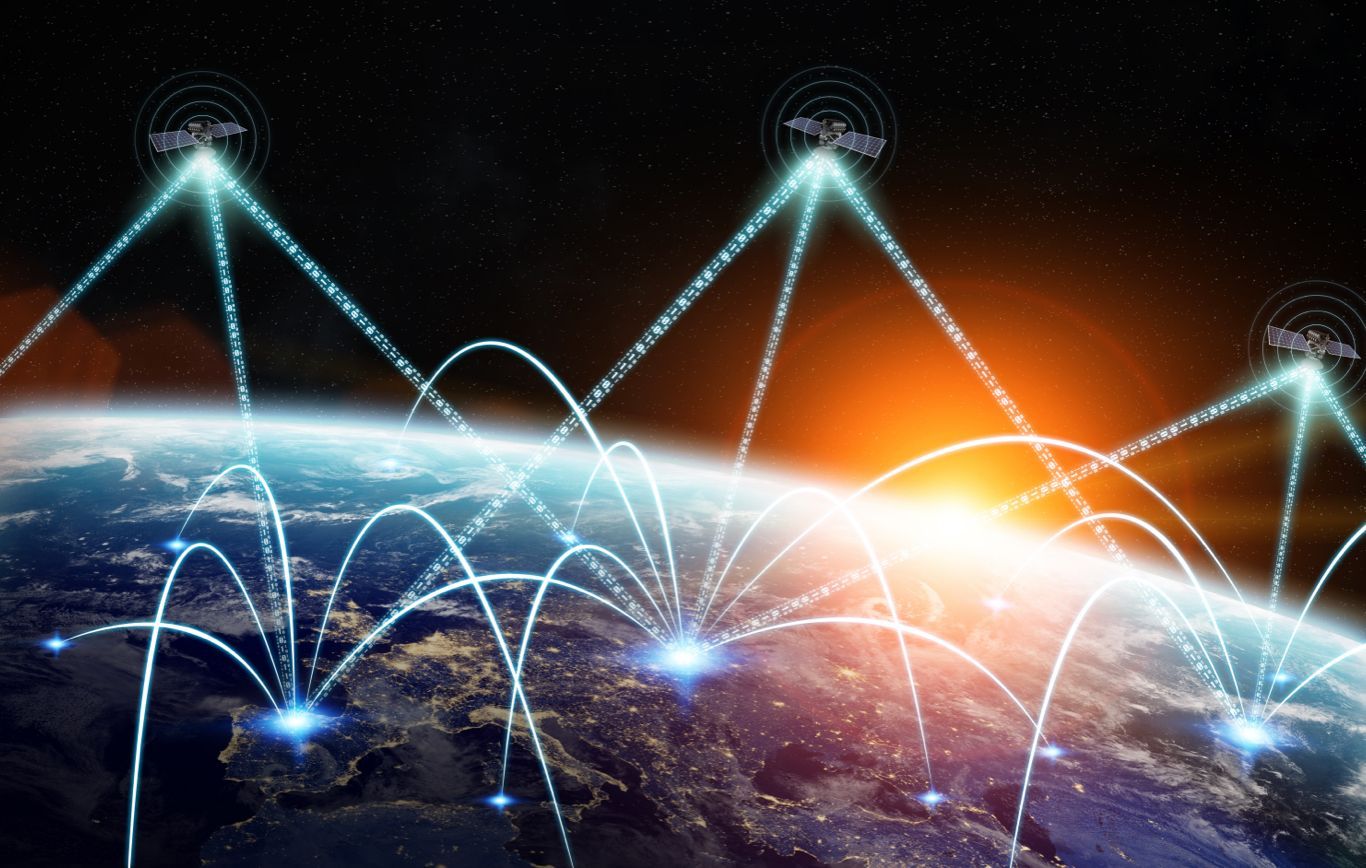
(Image: Adobe)
In another sign of ongoing growth for satellite broadband connectivity, SpaceX have announced that they will teaming up with satellite operator, Telesat, starting in 2026. The company aim to test their Lightspeed constellation, and provide global broadband access by 2027, with the constellation eventually consulting of 198 satellites.
SpaceX of course operate their own, much larger Starlink mega-constellation, currently made up of 4,200 satellites, but possibly aiming to reach 42,000. Amazon will also soon begin launch of their own mega-constellation, Kuiper.
Another area we are seeing continuing growth is in direct-to-smartphone satellite connectivity. This week AST Space Mobile announced that they conducted a demonstration using their Blue Walker 3 test satellite, which successfully performed a 5G telephone call on an ordinary smartphone in a cellular dead zone. Satellite operator Globalstar also recently announced that they will expand smartphone functionality using its constellation, in partnership with Apple. They will also look to enable satellite-based phone calls, currently just allowing for SOS messaging on the latest iPhone.
However, AST’s development, that it can be used on an ordinary smartphone, could be another game-changer in being able to drastically increase user outreach. This in turn, as we have previously suggested, could have a knock-on affect for the industry; requiring more satellites, more orbital infrastructure and servicing, launches and supply.
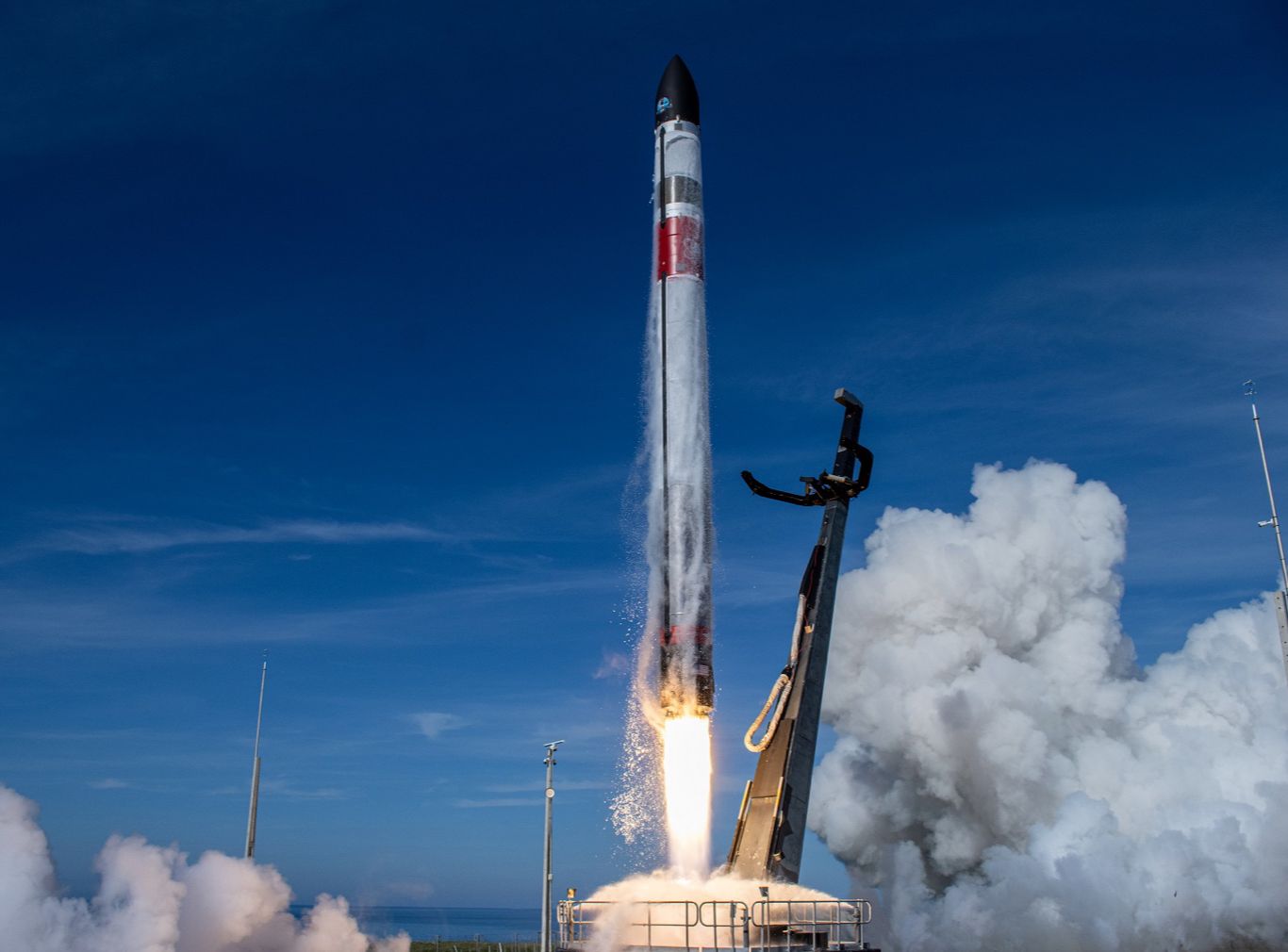
Rocket Lab's Electron (Image: Rocket Lab)
Startups test prototypes, Rocket Lab experience launch failure
Last week we witnessed the successful launch of Firefly Aerospace’s Vistus Nox mission, a responsive demonstration for the US Space Force, demonstrating their ability to launch a satellite into orbit at short notice. The mission also represented the increasing reliance the US is putting on the commercial sector in space to answer defence needs and shows how they are leveraging the strength of their private sector against other leading space nations.
This week ABL received a similar request from the US Space Force, and received a $15 million task order to also carry out a responsive launch demo. Timing has not et been released and ABL are yet to reach orbit. Nonetheless, this appears to show how the US look to operate in future, and are perhaps looking to diversify and not solely rely on one launch company, such as SpaceX.
Other startups have been testing their prototype launch vehicles, with reusability again being key technology. US-based Stoke Space have successfully performed and “up-down” test of their Hopper reusable launch system. Hopper2 is an iteration on their Hopper1 vehicle, which they worked on earlier this year.
Furthermore, a project founded by the Imperial College London is preparing for launch of their reusable launch mission. This Sunday the Karman Space Programme (KSP) will attempt a two-stage rocket launch in order to test systems of their Orion space vehicle and would be the most powerful reusable British rocket. The launch will take place at Mojave, California.
Thirdly, German company, Polaris Spaceplanes, has successfully completed a test flight of its MIRA-Light prototype vehicle. MIRA is a mini-prototype which precedes the upcoming NOVA, which will be powered by methane rocket engines, due to fly next year. Further, this precedes their ultimate, multipurpose, hypersonic transport vehicle, AURORA, which is designed to carry 10,000kg of payload into suborbital velocities, and of course again, demonstrates the continuing desire to develop reusable space vehicles.
Developments from European launch startups and research centres such as Polaris and KSP will come as positive news for ESA and the overall European quest for launch non-dependance. Europe’s Ariane-6 rocket has still not launched, and this week the head of launch startup, PLD Space, emphasised the need to provide funding to launch startups in order to meet launch demand without sourcing outside partners.
Spain-based PLD are anticipating the launch of their own Muira rocket after was delayed earlier this year. They will also look into the use of recovery and reuse of their boosters.
One thing this does indicate is the growing dependence on the private sector for innovation and the speed at which they can innovate. Whether it is the US and their need for responsive technology, or Europe in their quest for launch sovereignty, the private sector are leading the pack.
Rocket Lab experience failure, SpaceX await Starship license
Yet it wasn’t all stories of success in the launch sector this week. New Zealand-based Rocket Lab experienced launch failure of their seemingly otherwise reliable Electron Rocket. It appears that the engines malfunctioned in the second stage, causing loss of the mission. While it isn’t unusual for launch anomalies, it does come as a surprise for a company that were generating a reputation akin to that of SpaceX, and the leader in small satellite launches.
This was their 41st overall Electron launch, but the incident may raise questions regarding the reliability of their engines, which they have also been attempting to develop for reusability.
Chinese startup, Galactic Energy, have experienced their first launch failure this week, with the specific reasons still being investigated. This was the 10th launch of their Ceres rockets and will also come as a setback for another startup who were experiencing rolling success.
Nonetheless, sustained success does also come with failures, and perhaps no-one knows this as well as Elon Musk. Their first Starship launch was terminated mid-flight after it went off-course, but the company are coming loser to their second demonstration launch after the FAA announced they are looking to close their safety review in October.
Frameworks for cooperation, Taiwan seek international partnerships
An ongoing development in the space sector is that of competing views of how to build universal legal frameworks that ensure the ongoing, fair and peaceful use of space, the Moon and beyond. One vision is the US Artemis Accords, a set of non-binding rules and norms for uses of space. Germany have become the 29th nation to sign the Accords. The US have now got ESA’s top contributor onboard, and also comes after India recently joined.
China’s competing International Lunar Research Station (ILRS) project has also recently gathered partners, but may be noting the powerful partners the US is now attracting.
Amazon Web Services have also announced that they have signed an MoU with the Indian Space Research Organization (ISRO) and Indian National Space Promotion and Authorization Centre (IN-SPACe) to develop India’s space capabilities, saying that they will “…provide space startups tools, resources, and expert technical support for free through the AWS Activate program”, according to Satellite Today.
Proving opportunity for more technical frameworks of cooperation, the government-sponsored Taiwan Accelerator Plus (TAcc+) programme has been reaching out to international patterns, in order to develop their own space programme and “plug gaps” in their space industry supply chain. Over the past month they have been working with companies such as Axiom Space (US), Vellon Space (India) and Yuri GmbH (Germany), working in areas such as in-space manufacturing, biosciences and micro-gravity.
Taiwan is of course a world leader in chip manufacturing and are looking to develop a sovereign space program of their own. New international partnerships may then begin to emerge, for purposes of technology sharing. It will also be interesting to see how this will impact the geopolitical situation in the region. Western nations may, for example use the space sector as a means of developing stronger and closer ties to Taiwan.
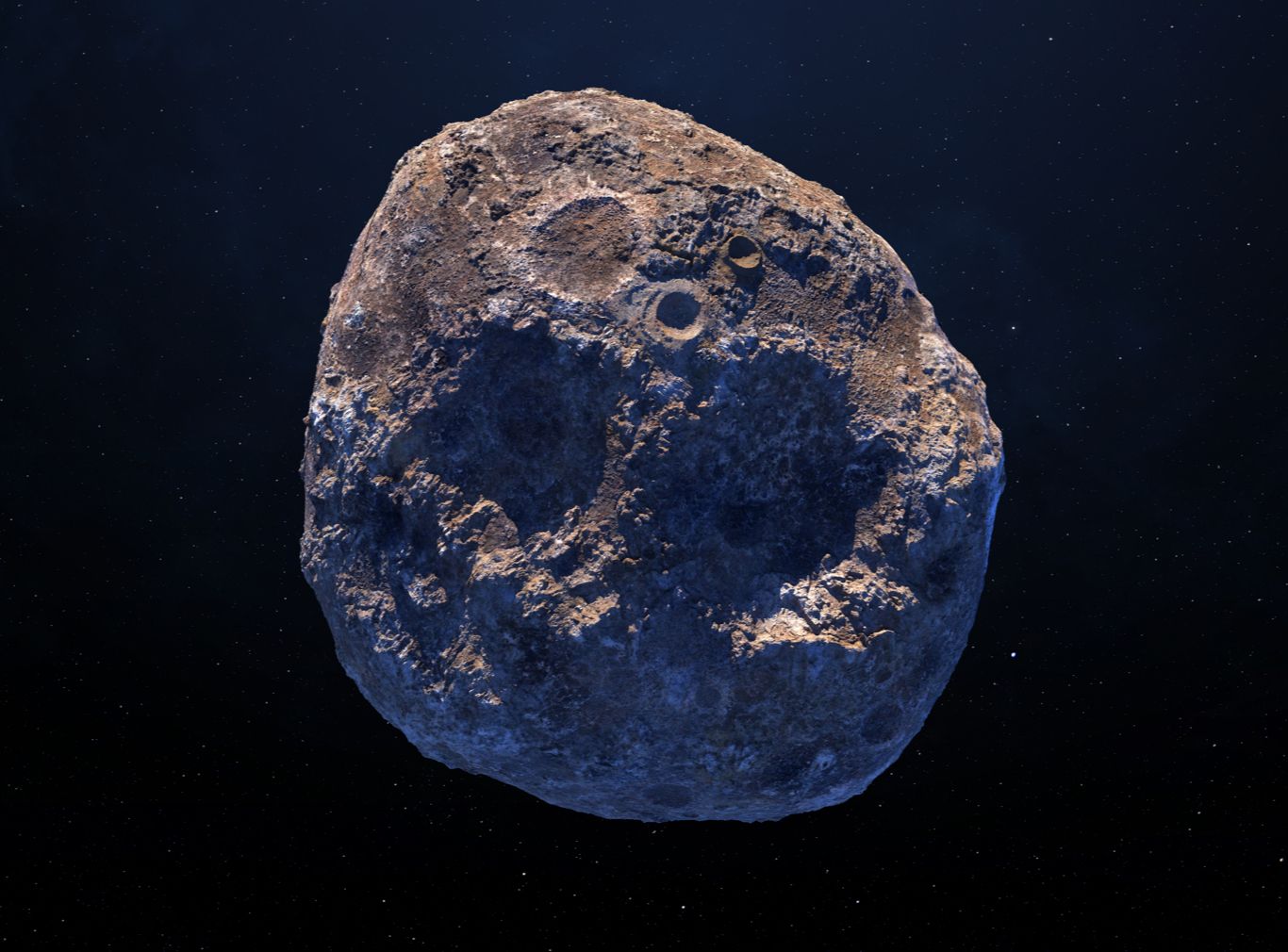
Asteroid Psyche (Image: Adobe)
Asteroid season begins, in-space manufacturing facing a hurdle
We are about to enter an exciting time for asteroid exploration in the coming weeks and months. On September 24th, NASA OSIRIS-REx is due to return an asteroid sample to Earth, after setting off on its journey in 2016. The spacecraft will return a sample of asteroid Bennu, with scientists hoping to use it to learn more about the origins of our solar system.
Also, next month we are due to see the launch of a long-awaited NASA asteroid relay mission. The Psyche mission will head off to visit asteroid 16 Psyche, which gained much attention in recent years after gaming a price tag of this $10,000 quintillion, due to its makeup of valuable metals such as iron and nickel. The mission itself isn’t necessarily related to asteroid mining, but to learn about the metallic cores of planets, such as Earth. Nonetheless, it does again ask questions about the feasibility of utilising space resources in future.
One area that space resources are touted as being used is in in-space manufacturing. Numerous companies are now working in this area in order to use the beneficial conditions of space to produce delicate material such as semiconductors. One advantage would be to eliminate the costly need to take them from Earth, for example.
Varda Space (US) are one company working towards in-space manufacturing of pharmaceuticals. Earlier this year they successfully produced ritonavir, a drug used to treat HIV, on their spacecraft in-orbit. However, this week they faced setbacks as the US Air Force and FAA denied a request to send the produce back on their reentry module. Tech Crunch received an email response from the FAA stating that it was refused “due to the overall safety, risk and impact analysis.”
Varda have developed their reentry vehicle at a very low cost compared to other reentry modules such as SpaceX’s Dragon. It’s also a very young technology, so this incident may perhaps act as a precedent for future such missions. But as with developing universal space laws, this is all uncharted territory.
External Links
This Week
*News articles posted here are not property of ANASDA GmbH and belong to their respected owners. Postings here are external links only.
Our future in space
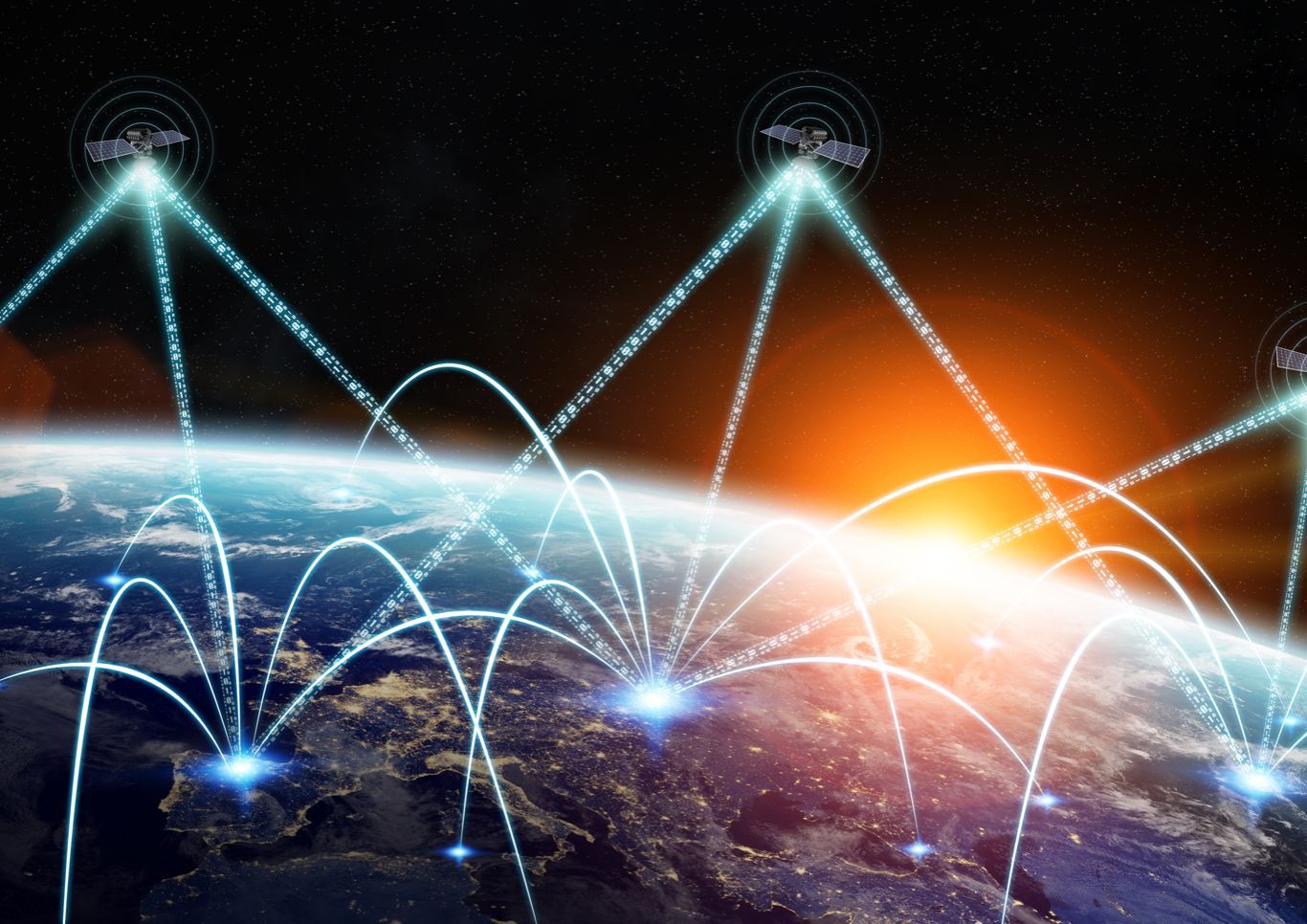
(Image: Adobe)
23 September 2023
Satellite connectivity on ordinary smartphone, European startup launches and frameworks for future space law - Space News Roundup
In another sign of ongoing growth for satellite broadband connectivity, SpaceX have announced that they will teaming up with satellite operator, Telesat, starting in 2026. The company aim to test their Lightspeed constellation, and provide global broadband access by 2027, with the constellation eventually consulting of 198 satellites.
SpaceX of course operate their own, much larger Starlink mega-constellation, currently made up of 4,200 satellites, but possibly aiming to reach 42,000. Amazon will also soon begin launch of their own mega-constellation, Kuiper.
Another area we are seeing continuing growth is in direct-to-smartphone satellite connectivity. This week AST Space Mobile announced that they conducted a demonstration using their Blue Walker 3 test satellite, which successfully performed a 5G telephone call on an ordinary smartphone in a cellular dead zone. Satellite operator Globalstar also recently announced that they will expand smartphone functionality using its constellation, in partnership with Apple. They will also look to enable satellite-based phone calls, currently just allowing for SOS messaging on the latest iPhone.
However, AST’s development, that it can be used on an ordinary smartphone, could be another game-changer in being able to drastically increase user outreach. This in turn, as we have previously suggested, could have a knock-on affect for the industry; requiring more satellites, more orbital infrastructure and servicing, launches and supply.
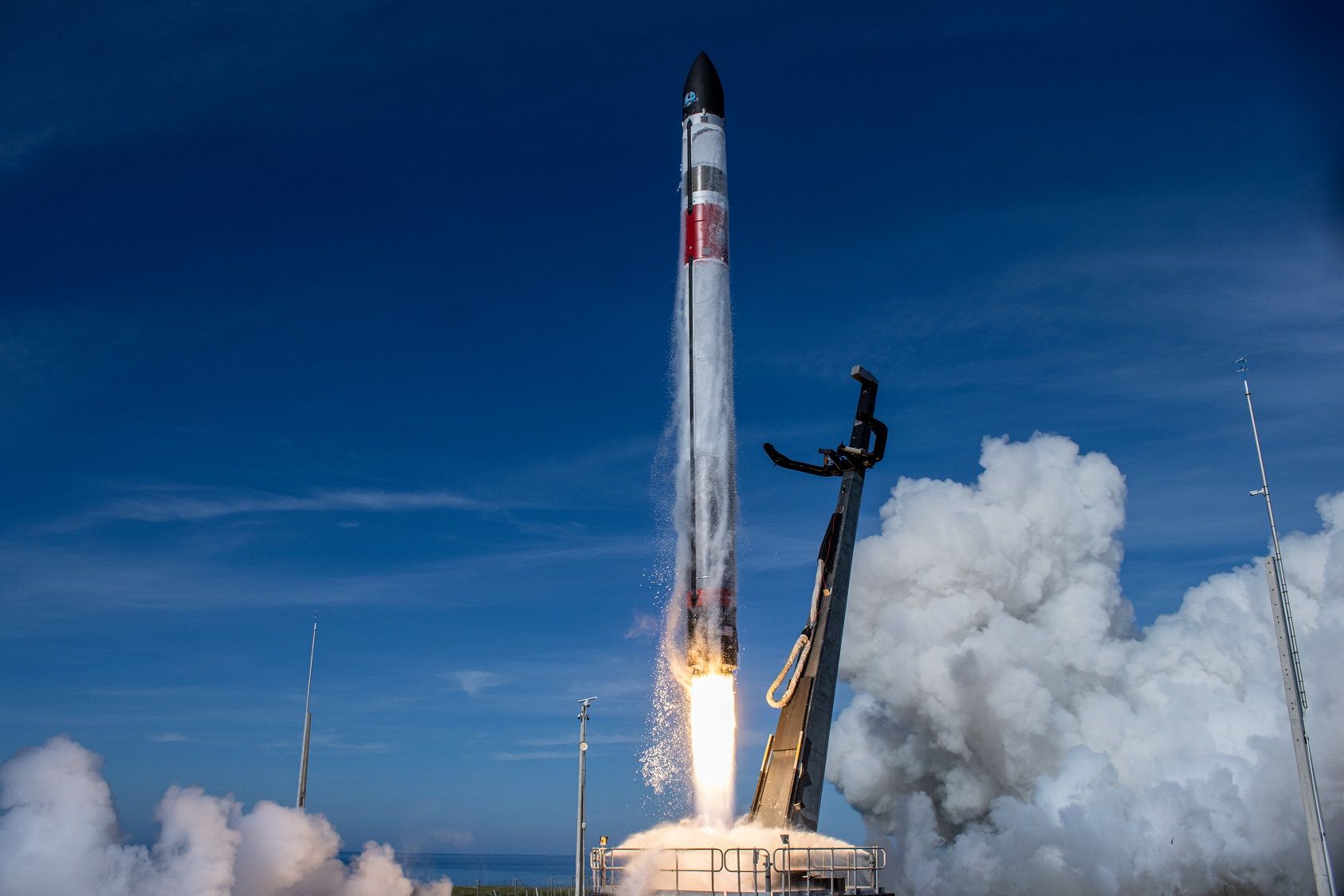
Rocket Lab's Electron (Image: Rocket Lab)
Startups test prototypes, Rocket Lab experience launch failure
Last week we witnessed the successful launch of Firefly Aerospace’s Vistus Nox mission, a responsive demonstration for the US Space Force, demonstrating their ability to launch a satellite into orbit at short notice. The mission also represented the increasing reliance the US is putting on the commercial sector in space to answer defence needs and shows how they are leveraging the strength of their private sector against other leading space nations.
This week ABL received a similar request from the US Space Force, and received a $15 million task order to also carry out a responsive launch demo. Timing has not et been released and ABL are yet to reach orbit. Nonetheless, this appears to show how the US look to operate in future, and are perhaps looking to diversify and not solely rely on one launch company, such as SpaceX.
Other startups have been testing their prototype launch vehicles, with reusability again being key technology. US-based Stoke Space have successfully performed and “up-down” test of their Hopper reusable launch system. Hopper2 is an iteration on their Hopper1 vehicle, which they worked on earlier this year.
Furthermore, a project founded by the Imperial College London is preparing for launch of their reusable launch mission. This Sunday the Karman Space Programme (KSP) will attempt a two-stage rocket launch in order to test systems of their Orion space vehicle and would be the most powerful reusable British rocket. The launch will take place at Mojave, California.
Thirdly, German company, Polaris Spaceplanes, has successfully completed a test flight of its MIRA-Light prototype vehicle. MIRA is a mini-prototype which precedes the upcoming NOVA, which will be powered by methane rocket engines, due to fly next year. Further, this precedes their ultimate, multipurpose, hypersonic transport vehicle, AURORA, which is designed to carry 10,000kg of payload into suborbital velocities, and of course again, demonstrates the continuing desire to develop reusable space vehicles.
Developments from European launch startups and research centres such as Polaris and KSP will come as positive news for ESA and the overall European quest for launch non-dependance. Europe’s Ariane-6 rocket has still not launched, and this week the head of launch startup, PLD Space, emphasised the need to provide funding to launch startups in order to meet launch demand without sourcing outside partners.
Spain-based PLD are anticipating the launch of their own Muira rocket after was delayed earlier this year. They will also look into the use of recovery and reuse of their boosters.
One thing this does indicate is the growing dependence on the private sector for innovation and the speed at which they can innovate. Whether it is the US and their need for responsive technology, or Europe in their quest for launch sovereignty, the private sector are leading the pack.
Rocket Lab experience failure, SpaceX await Starship license
Yet it wasn’t all stories of success in the launch sector this week. New Zealand-based Rocket Lab experienced launch failure of their seemingly otherwise reliable Electron Rocket. It appears that the engines malfunctioned in the second stage, causing loss of the mission. While it isn’t unusual for launch anomalies, it does come as a surprise for a company that were generating a reputation akin to that of SpaceX, and the leader in small satellite launches.
This was their 41st overall Electron launch, but the incident may raise questions regarding the reliability of their engines, which they have also been attempting to develop for reusability.
Chinese startup, Galactic Energy, have experienced their first launch failure this week, with the specific reasons still being investigated. This was the 10th launch of their Ceres rockets and will also come as a setback for another startup who were experiencing rolling success.
Nonetheless, sustained success does also come with failures, and perhaps no-one knows this as well as Elon Musk. Their first Starship launch was terminated mid-flight after it went off-course, but the company are coming loser to their second demonstration launch after the FAA announced they are looking to close their safety review in October.
Frameworks for cooperation, Taiwan seek international partnerships
An ongoing development in the space sector is that of competing views of how to build universal legal frameworks that ensure the ongoing, fair and peaceful use of space, the Moon and beyond. One vision is the US Artemis Accords, a set of non-binding rules and norms for uses of space. Germany have become the 29th nation to sign the Accords. The US have now got ESA’s top contributor onboard, and also comes after India recently joined.
China’s competing International Lunar Research Station (ILRS) project has also recently gathered partners, but may be noting the powerful partners the US is now attracting.
Amazon Web Services have also announced that they have signed an MoU with the Indian Space Research Organization (ISRO) and Indian National Space Promotion and Authorization Centre (IN-SPACe) to develop India’s space capabilities, saying that they will “…provide space startups tools, resources, and expert technical support for free through the AWS Activate program”, according to Satellite Today.
Proving opportunity for more technical frameworks of cooperation, the government-sponsored Taiwan Accelerator Plus (TAcc+) programme has been reaching out to international patterns, in order to develop their own space programme and “plug gaps” in their space industry supply chain. Over the past month they have been working with companies such as Axiom Space (US), Vellon Space (India) and Yuri GmbH (Germany), working in areas such as in-space manufacturing, biosciences and micro-gravity.
Taiwan is of course a world leader in chip manufacturing and are looking to develop a sovereign space program of their own. New international partnerships may then begin to emerge, for purposes of technology sharing. It will also be interesting to see how this will impact the geopolitical situation in the region. Western nations may, for example use the space sector as a means of developing stronger and closer ties to Taiwan.
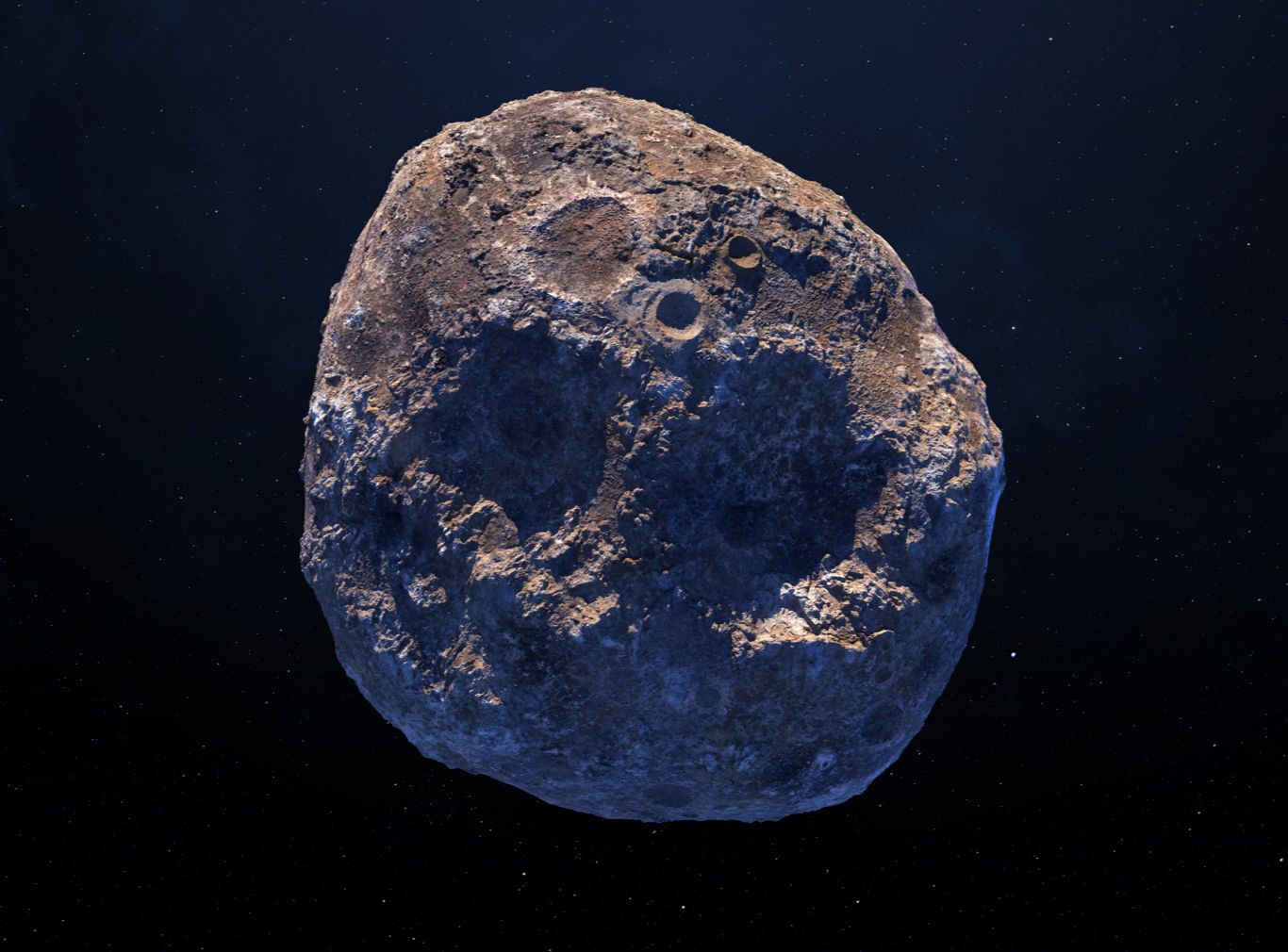
Asteroid Psyche (Image: Adobe)
Asteroid season begins, in-space manufacturing facing a hurdle
We are about to enter an exciting time for asteroid exploration in the coming weeks and months. On September 24th, NASA OSIRIS-REx is due to return an asteroid sample to Earth, after setting off on its journey in 2016. The spacecraft will return a sample of asteroid Bennu, with scientists hoping to use it to learn more about the origins of our solar system.
Also, next month we are due to see the launch of a long-awaited NASA asteroid relay mission. The Psyche mission will head off to visit asteroid 16 Psyche, which gained much attention in recent years after gaming a price tag of this $10,000 quintillion, due to its makeup of valuable metals such as iron and nickel. The mission itself isn’t necessarily related to asteroid mining, but to learn about the metallic cores of planets, such as Earth. Nonetheless, it does again ask questions about the feasibility of utilising space resources in future.
One area that space resources are touted as being used is in in-space manufacturing. Numerous companies are now working in this area in order to use the beneficial conditions of space to produce delicate material such as semiconductors. One advantage would be to eliminate the costly need to take them from Earth, for example.
Varda Space (US) are one company working towards in-space manufacturing of pharmaceuticals. Earlier this year they successfully produced ritonavir, a drug used to treat HIV, on their spacecraft in-orbit. However, this week they faced setbacks as the US Air Force and FAA denied a request to send the produce back on their reentry module. Tech Crunch received an email response from the FAA stating that it was refused “due to the overall safety, risk and impact analysis.”
Varda have developed their reentry vehicle at a very low cost compared to other reentry modules such as SpaceX’s Dragon. It’s also a very young technology, so this incident may perhaps act as a precedent for future such missions. But as with developing universal space laws, this is all uncharted territory.
Share this article
External Links
This Week
*News articles posted here are not property of ANASDA GmbH and belong to their respected owners. Postings here are external links only.
23 September 2023
Satellite connectivity on ordinary smartphone, European startup launches and frameworks for future space law - Space News Roundup
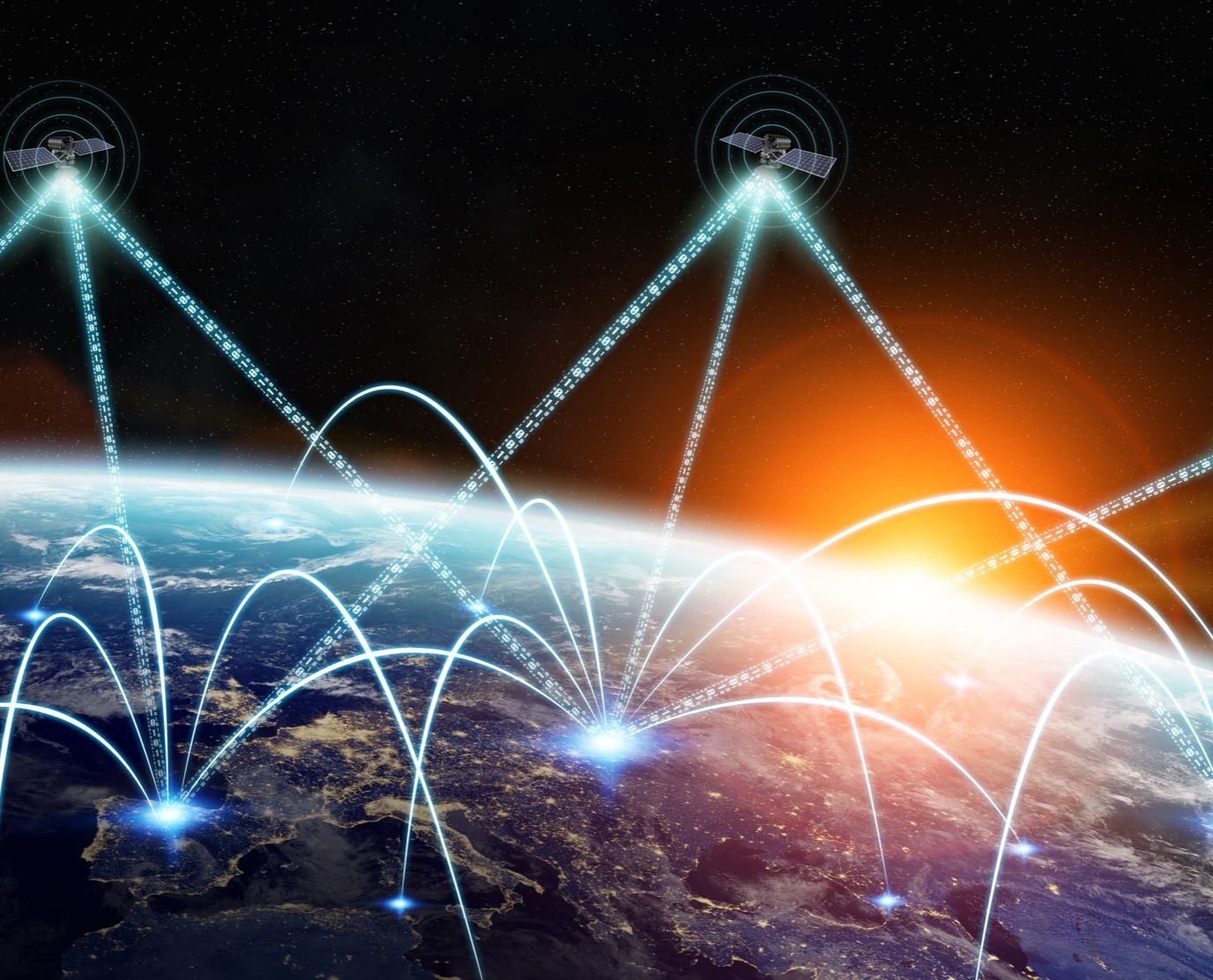
(Image: Adobe)
In another sign of ongoing growth for satellite broadband connectivity, SpaceX have announced that they will teaming up with satellite operator, Telesat, starting in 2026. The company aim to test their Lightspeed constellation, and provide global broadband access by 2027, with the constellation eventually consulting of 198 satellites.
SpaceX of course operate their own, much larger Starlink mega-constellation, currently made up of 4,200 satellites, but possibly aiming to reach 42,000. Amazon will also soon begin launch of their own mega-constellation, Kuiper.
Another area we are seeing continuing growth is in direct-to-smartphone satellite connectivity. This week AST Space Mobile announced that they conducted a demonstration using their Blue Walker 3 test satellite, which successfully performed a 5G telephone call on an ordinary smartphone in a cellular dead zone. Satellite operator Globalstar also recently announced that they will expand smartphone functionality using its constellation, in partnership with Apple. They will also look to enable satellite-based phone calls, currently just allowing for SOS messaging on the latest iPhone.
However, AST’s development, that it can be used on an ordinary smartphone, could be another game-changer in being able to drastically increase user outreach. This in turn, as we have previously suggested, could have a knock-on affect for the industry; requiring more satellites, more orbital infrastructure and servicing, launches and supply.
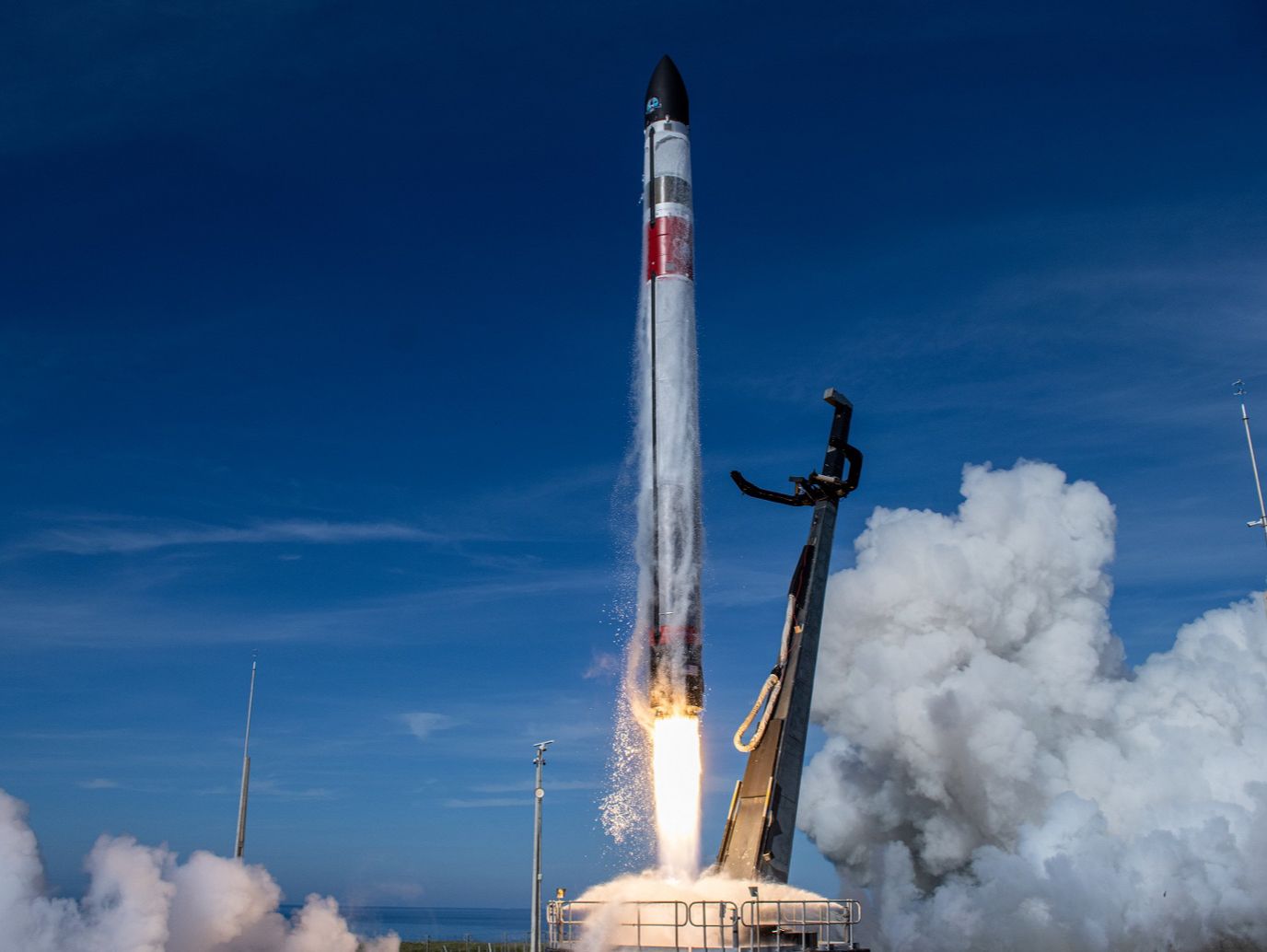
Rocket Lab's Electron (Image: Rocket Lab)
Startups test prototypes, Rocket Lab experience launch failure
Last week we witnessed the successful launch of Firefly Aerospace’s Vistus Nox mission, a responsive demonstration for the US Space Force, demonstrating their ability to launch a satellite into orbit at short notice. The mission also represented the increasing reliance the US is putting on the commercial sector in space to answer defence needs and shows how they are leveraging the strength of their private sector against other leading space nations.
This week ABL received a similar request from the US Space Force, and received a $15 million task order to also carry out a responsive launch demo. Timing has not et been released and ABL are yet to reach orbit. Nonetheless, this appears to show how the US look to operate in future, and are perhaps looking to diversify and not solely rely on one launch company, such as SpaceX.
Other startups have been testing their prototype launch vehicles, with reusability again being key technology. US-based Stoke Space have successfully performed and “up-down” test of their Hopper reusable launch system. Hopper2 is an iteration on their Hopper1 vehicle, which they worked on earlier this year.
Furthermore, a project founded by the Imperial College London is preparing for launch of their reusable launch mission. This Sunday the Karman Space Programme (KSP) will attempt a two-stage rocket launch in order to test systems of their Orion space vehicle and would be the most powerful reusable British rocket. The launch will take place at Mojave, California.
Thirdly, German company, Polaris Spaceplanes, has successfully completed a test flight of its MIRA-Light prototype vehicle. MIRA is a mini-prototype which precedes the upcoming NOVA, which will be powered by methane rocket engines, due to fly next year. Further, this precedes their ultimate, multipurpose, hypersonic transport vehicle, AURORA, which is designed to carry 10,000kg of payload into suborbital velocities, and of course again, demonstrates the continuing desire to develop reusable space vehicles.
Developments from European launch startups and research centres such as Polaris and KSP will come as positive news for ESA and the overall European quest for launch non-dependance. Europe’s Ariane-6 rocket has still not launched, and this week the head of launch startup, PLD Space, emphasised the need to provide funding to launch startups in order to meet launch demand without sourcing outside partners.
Spain-based PLD are anticipating the launch of their own Muira rocket after was delayed earlier this year. They will also look into the use of recovery and reuse of their boosters.
One thing this does indicate is the growing dependence on the private sector for innovation and the speed at which they can innovate. Whether it is the US and their need for responsive technology, or Europe in their quest for launch sovereignty, the private sector are leading the pack.
Rocket Lab experience failure, SpaceX await Starship license
Yet it wasn’t all stories of success in the launch sector this week. New Zealand-based Rocket Lab experienced launch failure of their seemingly otherwise reliable Electron Rocket. It appears that the engines malfunctioned in the second stage, causing loss of the mission. While it isn’t unusual for launch anomalies, it does come as a surprise for a company that were generating a reputation akin to that of SpaceX, and the leader in small satellite launches.
This was their 41st overall Electron launch, but the incident may raise questions regarding the reliability of their engines, which they have also been attempting to develop for reusability.
Chinese startup, Galactic Energy, have experienced their first launch failure this week, with the specific reasons still being investigated. This was the 10th launch of their Ceres rockets and will also come as a setback for another startup who were experiencing rolling success.
Nonetheless, sustained success does also come with failures, and perhaps no-one knows this as well as Elon Musk. Their first Starship launch was terminated mid-flight after it went off-course, but the company are coming loser to their second demonstration launch after the FAA announced they are looking to close their safety review in October.
Frameworks for cooperation, Taiwan seek international partnerships
An ongoing development in the space sector is that of competing views of how to build universal legal frameworks that ensure the ongoing, fair and peaceful use of space, the Moon and beyond. One vision is the US Artemis Accords, a set of non-binding rules and norms for uses of space. Germany have become the 29th nation to sign the Accords. The US have now got ESA’s top contributor onboard, and also comes after India recently joined.
China’s competing International Lunar Research Station (ILRS) project has also recently gathered partners, but may be noting the powerful partners the US is now attracting.
Amazon Web Services have also announced that they have signed an MoU with the Indian Space Research Organization (ISRO) and Indian National Space Promotion and Authorization Centre (IN-SPACe) to develop India’s space capabilities, saying that they will “…provide space startups tools, resources, and expert technical support for free through the AWS Activate program”, according to Satellite Today.
Proving opportunity for more technical frameworks of cooperation, the government-sponsored Taiwan Accelerator Plus (TAcc+) programme has been reaching out to international patterns, in order to develop their own space programme and “plug gaps” in their space industry supply chain. Over the past month they have been working with companies such as Axiom Space (US), Vellon Space (India) and Yuri GmbH (Germany), working in areas such as in-space manufacturing, biosciences and micro-gravity.
Taiwan is of course a world leader in chip manufacturing and are looking to develop a sovereign space program of their own. New international partnerships may then begin to emerge, for purposes of technology sharing. It will also be interesting to see how this will impact the geopolitical situation in the region. Western nations may, for example use the space sector as a means of developing stronger and closer ties to Taiwan.

Asteroid Psyche (Image: Adobe)
Asteroid season begins, in-space manufacturing facing a hurdle
We are about to enter an exciting time for asteroid exploration in the coming weeks and months. On September 24th, NASA OSIRIS-REx is due to return an asteroid sample to Earth, after setting off on its journey in 2016. The spacecraft will return a sample of asteroid Bennu, with scientists hoping to use it to learn more about the origins of our solar system.
Also, next month we are due to see the launch of a long-awaited NASA asteroid relay mission. The Psyche mission will head off to visit asteroid 16 Psyche, which gained much attention in recent years after gaming a price tag of this $10,000 quintillion, due to its makeup of valuable metals such as iron and nickel. The mission itself isn’t necessarily related to asteroid mining, but to learn about the metallic cores of planets, such as Earth. Nonetheless, it does again ask questions about the feasibility of utilising space resources in future.
One area that space resources are touted as being used is in in-space manufacturing. Numerous companies are now working in this area in order to use the beneficial conditions of space to produce delicate material such as semiconductors. One advantage would be to eliminate the costly need to take them from Earth, for example.
Varda Space (US) are one company working towards in-space manufacturing of pharmaceuticals. Earlier this year they successfully produced ritonavir, a drug used to treat HIV, on their spacecraft in-orbit. However, this week they faced setbacks as the US Air Force and FAA denied a request to send the produce back on their reentry module. Tech Crunch received an email response from the FAA stating that it was refused “due to the overall safety, risk and impact analysis.”
Varda have developed their reentry vehicle at a very low cost compared to other reentry modules such as SpaceX’s Dragon. It’s also a very young technology, so this incident may perhaps act as a precedent for future such missions. But as with developing universal space laws, this is all uncharted territory.
Share this article
External Links
This Week
*News articles posted here are not property of ANASDA GmbH and belong to their respected owners. Postings here are external links only.














